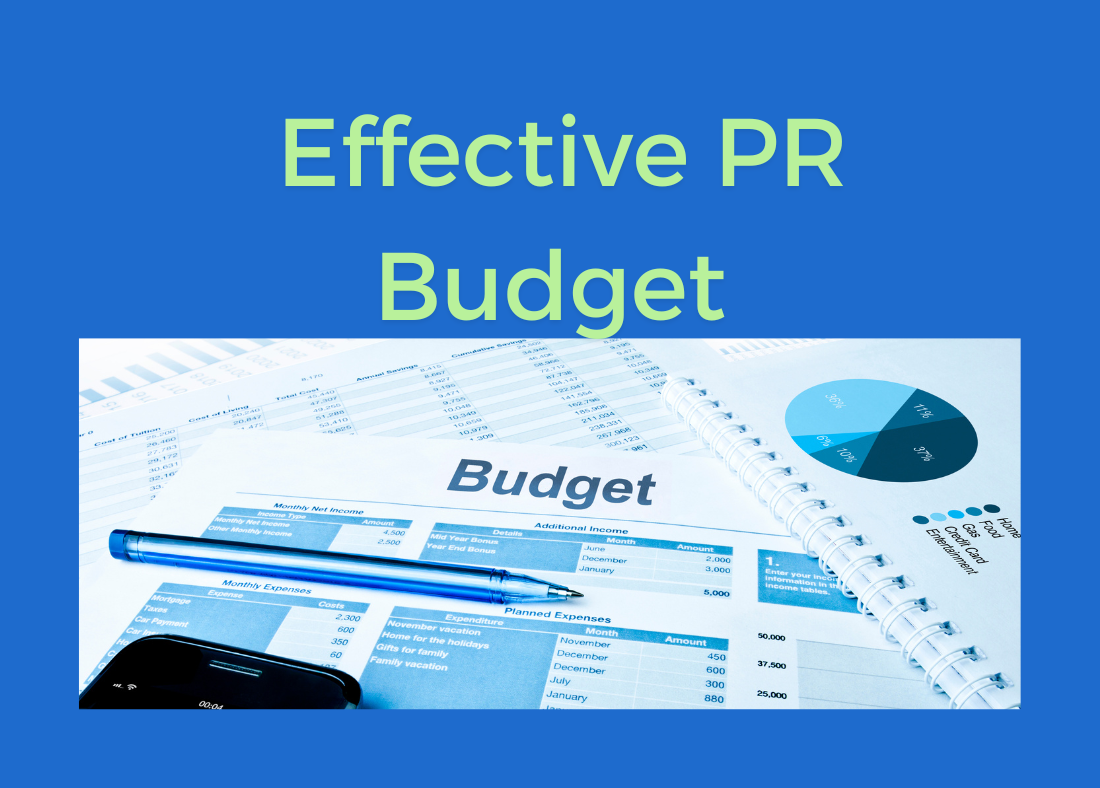Creating a PR budget is a critical step in ensuring that your communications strategy aligns with your business goals, and it helps you manage resources effectively while achieving maximum exposure. It requires a clear understanding of your objectives, a detailed plan of activities, and ongoing evaluation to ensure maximum efficiency.
Whether you’re a small business or a large enterprise, an organised PR budget can help you track and optimise every pound or dirham spent. Here’s a step-by-step guide to creating a PR budget. By following these, businesses can make informed decisions on where to allocate their resources, ensuring that every investment contributes to the company’s overall success.
Define Your PR Objectives
Start by clarifying your PR goals. Are you looking to increase brand awareness, manage a product launch, or improve your corporate reputation? The objectives will dictate how much and where you need to allocate your resources. For instance, a product launch might require more media outreach and event coordination than routine reputation management. Defining these goals will also help you measure the effectiveness of your PR campaigns later.
Identify Your PR Activities
Next, outline the specific PR activities you’ll need to support your objectives. These could include:
- Media Relations: Press releases, media outreach, and journalist engagement.
- Content Creation: Blog posts, newsletters, and social media content.
- Event Planning: For product launches, press conferences, or webinars.
- Crisis Management: A contingency plan for potential reputation threats.
- Influencer or Thought Leadership Initiatives: Collaborations with industry influencers or opinion leaders.
Each of these activities will have associated costs, which need to be planned for accordingly.
Estimate Costs for Each Activity
Once you’ve identified your PR activities, it’s time to estimate the costs. These can vary based on the scale and scope of your business. Typical expenses might include:
- Agency Fees: If you work with a PR agency, you’ll need to factor in monthly retainers or project-based fees.
- Internal Costs: This includes the salaries of in-house PR staff or freelancers hired for specific tasks like content writing or event management.
- Media Monitoring Tools: Platforms like Meltwater or Cision, used to track media coverage and monitor brand reputation, often come with subscription fees.
- Content Creation Tools: Budget for design software, video production, or other resources necessary to create high-quality PR content.
- Event Costs: Venue hire, catering, guest speakers, and promotional materials for any event you might be hosting.
- Paid Media: If your PR strategy includes paid sponsorships, advertorials, or partnerships with influencers, allocate funds for these too.
Allocate Budget for Contingencies
PR can sometimes be unpredictable, especially when dealing with crises or unforeseen events. It’s important to set aside a portion of your budget for such emergencies. This could cover costs for crisis communication strategies, emergency press releases, or unplanned media buy-ins.
Measure the ROI
As you implement your PR strategy, you’ll want to measure your return on investment (ROI). This includes tracking media coverage, engagement on social media, and overall brand sentiment. Having the right analytics tools and frameworks in place can help you assess which PR activities are providing the best value and where adjustments need to be made.
Review and Adjust Regularly
Your PR budget shouldn’t be static. As your business evolves, and as you track the effectiveness of your PR activities, you may need to reallocate resources or increase/decrease spending in certain areas. Regular reviews can ensure that your budget remains aligned with your business objectives.
Whether you’re handling PR internally or working with a specialist agency, a well-structured budget will help you manage expectations, optimise results, and demonstrate the value of your PR efforts to stakeholders.



